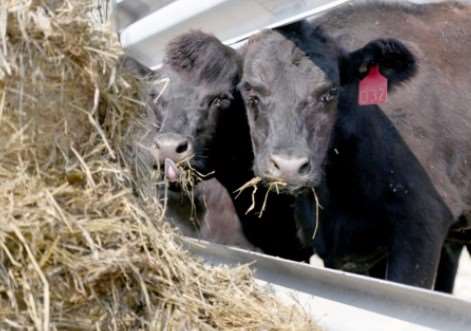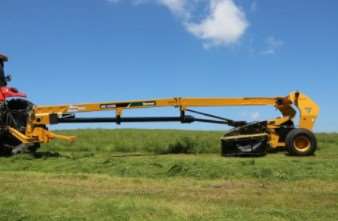
Forage quality doesn’t increase after harvest, so what methods can be put into place to ensure haylage yields are of optimum use to animals? Agriculture experts have spent years researching what steps affect forage nutrition and some of the most minute details can alter the makeup of your product.
“We should remember the hay is the highest quality the day that we cut it,” said Dr. Dan Undersander, forage agronomist at the University of Wisconsin-Madison. “We’re simply trying to preserve that quality through the harvesting process. The higher the quality the more animal performance we’ll get in terms of weight gain or milk production.”
In his years of experience, Undersander said the cutting height of your forage should be the first step in your management system.
The cutting height is really important, and from the perspective of quality, getting that cutter bar off the ground by 3 or 4 inches – whatever it may be depending on the grass – is pretty important. When you’re going to select a mower conditioner, you need to ask these questions: How high can this thing cut? How high can I get the cutter bar off the ground? In doing that also ask is there a way to get it off the ground without tilting the head back? Vermeer has found that having the head tilted forward on the mower conditioner will result in a cleaner cut, though many manufacturers’ machinery requires you to tilt the head back.
Undersander recommends cutting legume crops at 3 inches, cool season grass at 4 inches and land grass or millet up to 6 inches.

“The reason being, is the grass stores energy in the base of the stem and if we cut too short then it won’t regrow as fast and it won’t yield as much for the year,” Undersander explained. “Alfalfa, on the other hand, and clover store their energy in the root and you can cut them shorter because they will regrow from those carbohydrates in the roots.”
The reason Undersander recommends 3 inches for alfalfa is two-fold. While cutting lower results in more tonnage – it’s all stem and low-quality forage. The second reason is that the lower the cut, the more soil that can be picked up (particularly with disc mowers) when the soil is dry.
“We have seen samples that come through the forage testing lab that oftentimes run as much as 15 to 18 percent ash,” Undersander said. “Inside the grass or alfalfa, we have something close to around six percent ash. So that means these people have picked up 10 percent dirt. What we do know is that beef cattle don’t gain weight eating dirt and cows don’t milk eating dirt.”

I know when I was a kid, we used to basically scalp the ground when mowing. When I look at it now, from the perspective of quality, getting that cutter bar up off the ground is essential.
Undersander says keeping the total ash content of forage below 10 percent is a doable goal that’s essential to nutrition. With this 10 percent goal, he’s allotting for an estimated six to eight percent of ash inside the plant and one or two percent dirt.
“We can’t get away from dirt but we can try to keep it to a minimum,” Undersander said. “What we do find is that the more dirt that you have in that sample – remember that each one percent of ash reduces the TDN (total digestible nutrients) content by one percent, because each one percent ash is one percent less nutrients and one percent less minerals.”
Click here to see more...